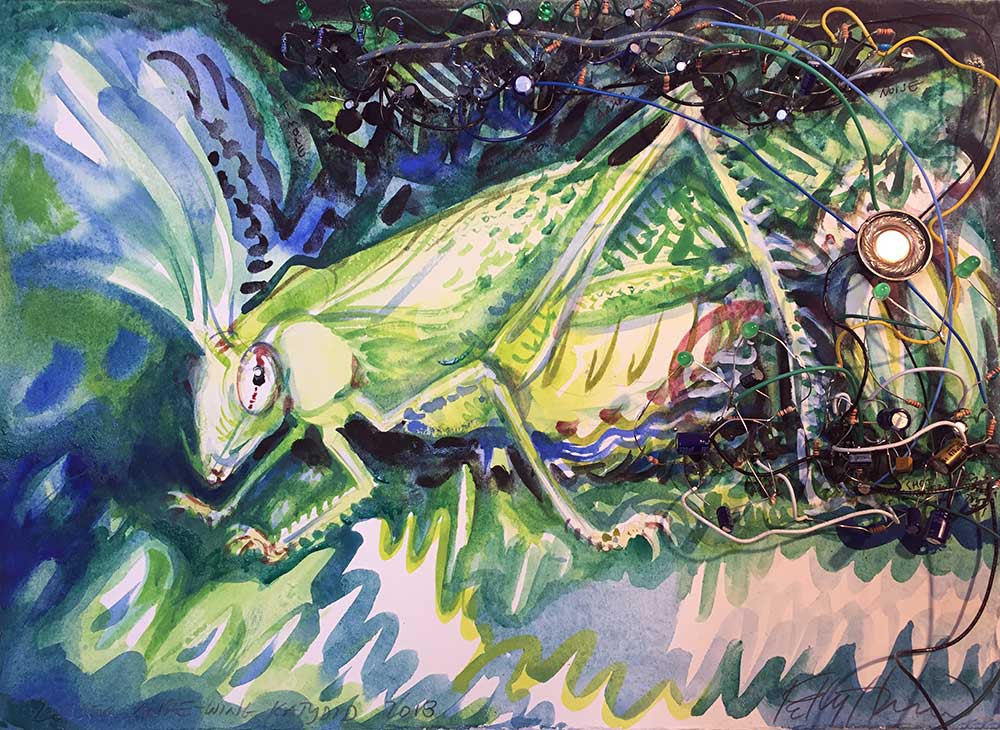*This log is an extension of my last entry, so please start there if you want more information about how the following work of art was made.

I finished breadboarding my circuit for a Lesser Angle-winged Katydid. Then I forced myself to document it with a schematic -- "forced" because my tendency is to go on inventing things and forget my design history, and I have learned the hard way that I must solder an instance of my schematic to be sure that it's accurate. It's all good, though, because building a permanent circuit gives me a future reference to use alone or in parallel with other sound-generating circuits. Many of my circuits are sensitive to noise, so I try to test them in combination before I send out board designs or embark on a larger piece.
I got into the habit of making these electrified watercolor studies in the days before I used software for schematic design and printed circuit board layout. You can see images of early works here. As time goes by, these studies help me to remember why I designed the circuit in the first place, like a bookmark for a time and place in life. I realize that there are more practical ways to archive a circuit, but it's a good excuse to make art.
Here is a video of the Katydid "rattling." I included a couple of crickets to give the Katydid's sound a more natural context.
To conclude this log, it occurs to me that some of you might not have drawing or painting skills. While I can't teach you to be an artist, I can suggest this useful hack: project an image and trace it. Please refer to the instructions associated with this project for more details on "How to draw if you have no artistic talent."
 Kelly Heaton
Kelly Heaton
Discussions
Become a Hackaday.io Member
Create an account to leave a comment. Already have an account? Log In.